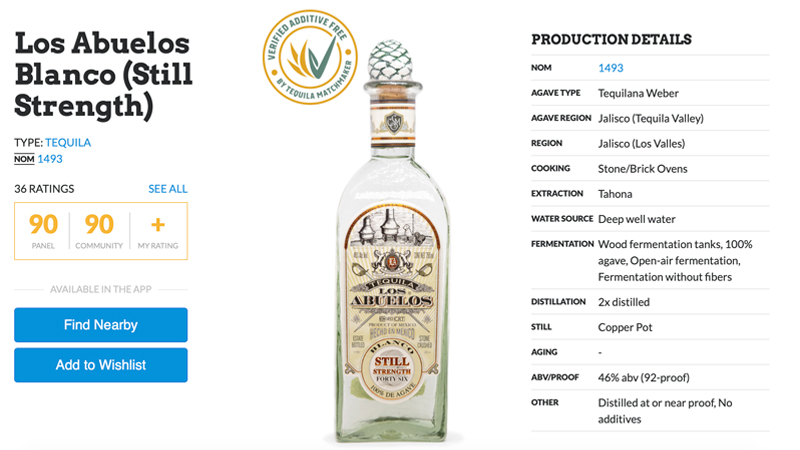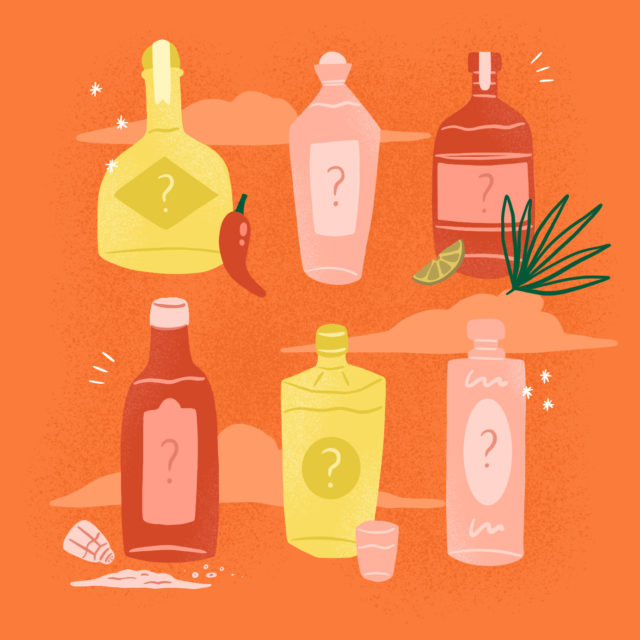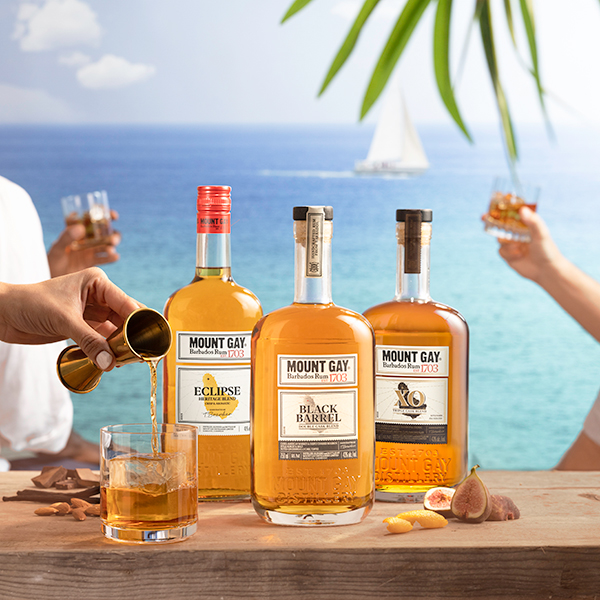One hundred percent. The term seems straight forward enough. You see it listed on labels constantly. You seek it out in the food you eat. Who doesn’t want a burger made from 100 percent real beef? You fill your clothes drawer with T-shirts made from 100 percent cotton. When you’re absolutely certain of something, you might even respond with this succinct phrase: 100 percent. But in the case of 100 percent blue agave tequila, you shouldn’t be so sure. Thankfully, one couple is here to help boost your confidence.
“Additives can actually be used [in 100 percent agave tequila] and there is no requirement to notify the end consumer, as long as the amount added does not exceed 1 percent of total volume,” warns Grover Sanschagrin. Along with his wife Scarlet, the industry insider recently launched a tequila transparency initiative known as the Tequila Matchmaker Additive-Free Verification Program.
The two moved from California to Mexico in 2015, led by their love of the agave spirit. When developing an app called Tequila Matchmaker that documents where tequila brands are produced, they were exposed to hundreds of different examples of the spirit. And they began noticing a fundamental difference among some of the outliers — variation that couldn’t merely be chalked up to the “hand of the maker.”
“The difference, we later realized, was the use of additives,” Grover recalls. “This was eye-opening for us.” Studying the topic further, the Sanschagrins acquainted themselves with four specific “mellowing agents” routinely added to aged tequilas throughout Jalisco. They included sugar-based syrups, glycerin, oak extract, and caramel color, which are all permissible by Mexican law. When it comes to components designed to enhance flavors and aromas, literally dozens are allowed.
Since none of them have to be disclosed on the label, the vanilla notes you pick up in your favorite añejo might actually be vanilla extract — and you’d be none the wiser. “One crazy thing that some brands are starting to use is Neotame, which is 8,000 times more powerful than sugar, and has zero calories,” Grover says. “Many modern additives are extremely concentrated so it is easy to completely change a tequila while staying under that 1 percent legal limit. Nobody ever wants to talk about it.”
The Sanschagrins are forcing transparency into the conversation by offering a certification to distilleries that are willing to go through a rigorous inspection. “We are generally looking for sudden and dramatic changes between what comes out of the still or barrel, and what is made available to the public,” says Grover. “We also look at chemical analysis records, as well as internal purchase documents for the distillery. We are authorized to view all areas of a distillery, not just those that have been made attractive for tours.”

Understandably, opening up your entire operation to outsiders might be an uneasy proposition. Yet Grover and Scarlet note that brands have already been reaching out to them — some are eager for the stamp of additive-free verification. The Additive-Free Verification Program has verified 186 products so far, and has dozens of additional requests. Brands with verified products include Patrón, Fortaleza, Tequila Ocho, El Tesoro, and others.
Of course that’s just a drop in the bucket of the more than 1,700 bottlings now in existence in and around tequila country. But they’ve gotten off the ground with the cooperation of some of the biggest names in the business.
“As the tequila category continues to grow, we believe it’s important to keep consumers aware of what’s in their tequila,” says Antonio Rodriguez, director of production for Patrón — one of the first brands to be verified. “Consumers are asking for transparency from brands and want to understand what they are putting in their bodies. Many of them do not realize that very few tequila brands have made the commitment to stay additive-free, and instead have added artificial flavors, aromas, and colors to alter quality and enhance taste.”
Still, the fact remains that the Additive-Free Verification Program lacks the official authority to award government-backed certification to anyone — although brands are allowed to put the verification label on their bottles. The Tequila Regulatory Council (CRT) is the only tequila conformity agency in Mexico. It acts as enforcer of longstanding rules laid out by Mexico’s Ministry of Economy. And they’re not scheduled to review any policy adjustments until midway through 2022.
In the meantime, the CRT worries about the limitations of a non-governmental initiative like the one championed by the Sanschagrins. Speaking on background, a member of the CRT expresses doubts that the Additive-Free Verification Program could perform all the necessary analyses to confidently make assertions of purity. Further, they doubt the couple’s ability to fully perform the 1,700 audits needed for a full survey of the category. The CRT member also fears that consumers might be misled into thinking the brands that haven’t been evaluated yet must have something to hide.
The Mexican government can, of course, make this all a moot point by foisting transparent labeling upon the industry in two year’s time. By then it will have been nearly 50 years since the U.S. began recognizing tequila as a protected category of spirit, one that’s exclusive to the Mexican state of Jalisco — or from one of four neighboring states — and distilled from agave. If you had read the fine print back then, however, you’d know that only a basic majority of the sugars going into fermentation had to come from the spiky plant. The other 49 percent could come from just about any other fermentable commodity. Typically it was sugarcane.
For decades, this category (now known as mixto) formed the basis of endless frozen Margaritas and countless hangovers. The formation of the CRT in 1994 coincided with a growing movement of connoisseurs within the space; drinkers who were actually concerned with what was in this party-centric liquid. One hundred percent blue agave emerged as the response.
Though this sort of liquid had existed for generations, American drinkers were introduced to the concept of a sipping tequila more recently. These super-premium tequilas were marketed — and priced — accordingly. Over the past 20 years, sales of this super- premium segment have skyrocketed, growing by 1,042 percent. Almost all high-end bottles flaunt a 100 percent blue agave tag somewhere on their labels. And the new generation of enthusiasts seeking out this category have long been comforted by the fact that they’re drinking real tequila.
But the Sanschagrins fear that the Mexican government — and by extension the CRT — may be unlikely to address transparency head on, bringing attention to transparency issues. And some agency members don’t feel that transparency is important. “It’s proprietary information,” said one member of the agency who asked to remain anonymous. “Who knows what makes your grandmother’s turkey so good? Maybe there is a secret ingredient and she doesn’t want to share that. Maybe there is an additive there. It’s all part of the recipe.”
And sure, if it tastes good to you, that’s more than just an incidental consideration. But ignorance is rarely bliss when it comes to what you’re putting in your body. Vanilla extract or not, will the typical tequila drinker feel better knowing exactly what’s in their bottle? One hundred percent.
This story is a part of VP Pro, our free content platform and newsletter for the drinks industry, covering wine, beer, and liquor — and beyond. Sign up for VP Pro now!

